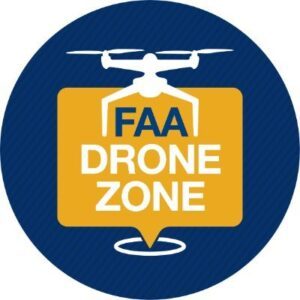
 Aviation Week writes that FAA drone registration is down by 50% – but why is that, and what does it mean for the industry? Has the use of drones dropped as much as registrations have, or are pilots simply not using the system?
Aviation Week writes that FAA drone registration is down by 50% – but why is that, and what does it mean for the industry? Has the use of drones dropped as much as registrations have, or are pilots simply not using the system?
The total number of pilots who registered drones through the FAA’s online system and commercial-registered drones “fell from 1,746,248 to 873,144” between December 2020 and January 2021, says Aviation Week. “As of March 1, the FAA listed 868,421 total registrations, consisting of 492,492 recreational flyers and 375,929 commercial-registered drones.”
The FAA tells Aviation Week that the change “is due in large part to the large number of drone registrations that reached their three-year expiration date in December 2020.”
“The FAA is continuing to review the registration data and plans to launch a drone registration information and awareness campaign later this year.”
FAA drone registration started at the very end of 2015 – a subsequent lawsuit put the program on hold temporarily, but registration was again required in 2017. We spoke with commercial drone expert Christopher Todd of Airborne International Response Team (AIRT) and DRONERESPONDERS why he thought drone registrations had dropped so significantly.
Todd says that there isn’t one single reason why registrations have dropped – but probably a combination of several. One of those reasons is simply that initial figures probably exaggerated the real fleet. “Three years ago, both general enthusiasm and bold predictions for the drone industry were driving intense experimentation with, and adoption of, UAS at the grassroots level,” says Todd. “There was a large, unregistered fleet that had accumulated from the Phantom 2 onward, that needed to be registered. When the FAA introduced the registration system, all off these aircraft — some which were probably nearing the end of their service life — were required to be registered per the regulations.
“This created an artificial registration bubble at the onset. That initial year of drones registrations was not an accurate representation of how the industry would grow,” Todd points out.
Secondly, many drone enthusiasts who planned to build a part or full-time business out of drone operations when Part 107 was released may have found that consumer demand for drone services couldn’t support them. “Those remote pilots who entered the industry with visions of grandeur soon found that it I can be difficult to make a living flying drones,” Todd says. “Many of these folks appear to have become disenchanted (as evidenced by Part 107 renewal numbers) and moved on to pursue other careers.”
That same disillusionment might apply to the recreational fleet. “For many recreational pilots, drones may have just been a temporary hobby and they have since moved on to other endeavors. Either way, this group saw no need to reregister their UAS.”
Finally – and this is where drone media and the FAA will have to help in getting the word out – pilots may just not be aware that they need to re-register drones. The three year drone registration period is ending for many who registered as soon as it was required. “Some operators probably simply forgot to renew their drone registration. Government is historically not very aggressive with sending out renewal notices. The DMV will typically send you one vehicle registration reminder. If you don’t take action, then you risk getting pulled over and receiving a traffic citation. With COVID-19 sweeping around the world, it is quite possible that the need to re-register drones fell off the radar.”
Drone registration provides important data that could influence future drone regulation decisions. But how can the FAA and other stakeholders encourage drone operators to take it seriously? While the 5 minute and $5 process is an extremely low barrier to compliance, Todd says that it may actually be too low. “I will also say that the $5 registration fee for a 3-year drone registration is a bit absurd…the FAA is undervaluing both itself, and the UAS industry,” says Todd. “I would like to see this fee increase to a minimum of $5 per year for all UAS. That would create more revenue for the FAA to allocate toward UAS endeavors, while also helping to increase professionalism among pilots with the UAS sector.”
“It doesn’t make much sense that the fee to operate a UAS in the National Airspace System for three years costs less than the price of a combo meal at a typical U.S. fast food restaurant. The FAA ought to reevaluate the current registration fee structure.”
Miriam McNabb is the Editor-in-Chief of DRONELIFE and CEO of JobForDrones, a professional drone services marketplace, and a fascinated observer of the emerging drone industry and the regulatory environment for drones. Miriam has penned over 3,000 articles focused on the commercial drone space and is an international speaker and recognized figure in the industry. Miriam has a degree from the University of Chicago and over 20 years of experience in high tech sales and marketing for new technologies.
For drone industry consulting or writing, Email Miriam.
TWITTER:@spaldingbarker
Subscribe to DroneLife here.
